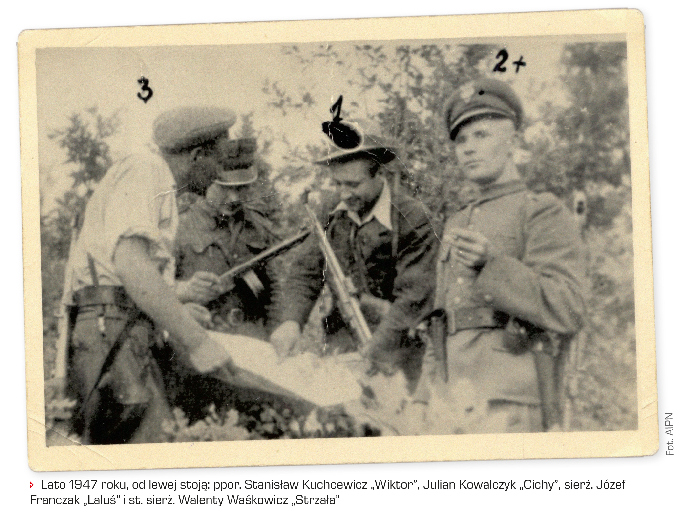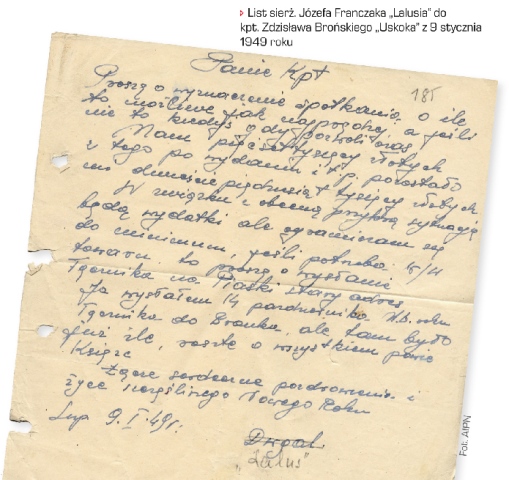For a few dozen years after the Second World War, the work of the officers of the Security Office, and later the Security Service, did not bring the expected results – “Laluś” had been constantly escaping their grasp. For the Communist authorities, which were preparing for a grand celebration of the 20th anniversary of gaining power in Poland, it was a stain on their honour. Not until the beginning of 1963, had the officers of the 3rd District Security Service Division of the Citizens’ Militia in Lublin, found an individual, who as it later turned out, played a crucial role in the Communist operation aimed to capture or kill Franczak.
Capture or kill
During the first meetings with aforementioned individual, the officers of the SB made him aware, that they know about his ties with their target. At first, he claimed that he only saw “Laluś” once, long time ago, in the summer of 1948. After seeing more and more evidence, he admitted of meeting Franczak on more occasions. In May 1963, lieutenant Kazimierz Mikołajczuk, an officer of the 3rd Division, could finally register a new secret collaborator, codename “Michał” or “Michael”. He was Stanisław Mazur – a cousin of Danuta Mazur who was Franczak’s fiancée. At the time, he was living in Lublin, but he came from the village of Wygnanowice, where “Lalek’s” fiancée and people helping him were living.
The search for “Laluś”, led by the Security Office and later the Security Service, was nicknamed “Pożar” or “Fire”. The operative actions were also aimed at his closest family and friends. There were attempts to recruit them as secret collaborators, who were to observe and report on all Franczak’s closest relatives and associates.
The officer handling the case, ordered Stanisław to pay frequent visits to his hometown. There, “Michał” met with “Lalek’s” closest people, whom he knew for years and trusted them greatly. For the first few months, nothing pointed to the fact, that the secret collaborator would fulfil the Communists’ hopes. In the protocols of the early meetings with his new superiors and the internal analyses of the Security Office, it was noted that the biggest issue was Mazur’s fear of being compromised by “Laluś’. That’s why the Communists persisted in convincing him, that Franczak needed to be caught. They also promised “Michał” that he would be protected and made him feel very important. They even formed social relations with him: “In order to tie him closer to us, we created a friendly atmosphere with some supper and vodka” wrote the officers of the SB.
A breakthrough came in August 1963. That’s when “Michał” managed to personally meet “Laluś”. For the next meetings between them, which took place in September and October, the Security Service equipped its collaborator with a “liliput” and “teleporter” – mobile wiretapping devices, which allowed for the officers of the SB to hear the recorded conversations from a few kilometres away, in a special car. When TW “Michał” set another date for a meeting with “Laluś”, through Danuta Mazur, for October 20th, the officers of the Security Service started preparing for the final “operative actions”. In early morning, the secret collaborator was taken by their car to Piaski, from where he walked to Wygnanowice.

